by Daniel Hathaway
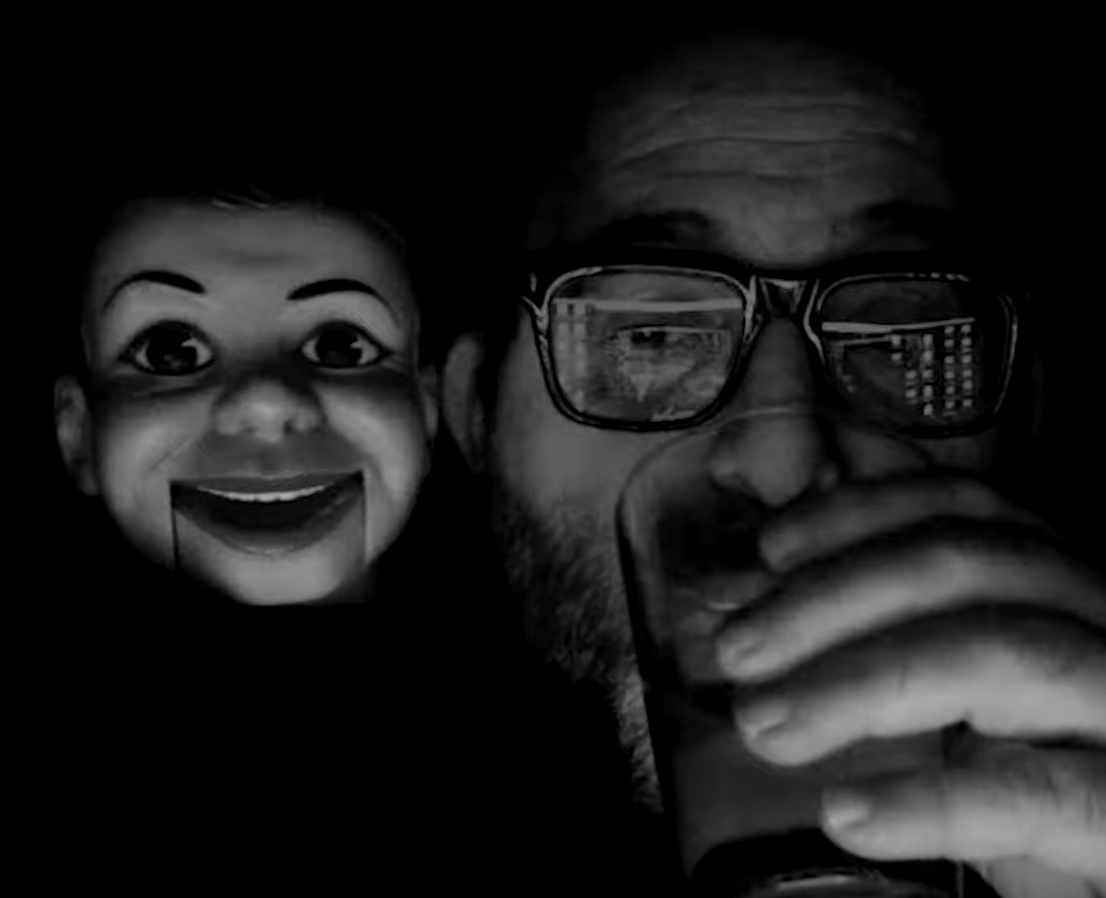
Artistic director Timothy Beyer set the tone for the opening work by Jeremy Rapaport-Stein, appearing like the floating head of the Wizard of Oz in a quasi-film noir introduction. Beset with a parched throat, he turned the emcee job over to a ventriloquist’s dummy, who carried on in time-honored vaudeville style while Beyer drank a glass of water.
That led to the first world premiere, Rapaport-Stein’s ten-movement There was something that I had wanted to say to you… At the opening, the hand of No Exit assistant director James Praznik wads up multiple pages of a legal pad while trying out title phrases with a not-so-sharp sharpie. Ultimately, there are 59 words in the title, which should earn the piece at least an honorable mention in Guinness.
In his notes, the composer writes,
This piece came from thinking about anxiety and isolation. I kept coming back to the image of a solitary musician wandering around their apartment, making tiny pieces out of every action they took. What started out as a possible metaphor for a piece turned instead more into the piece itself literally (as well as a prescription for the process of its composition).
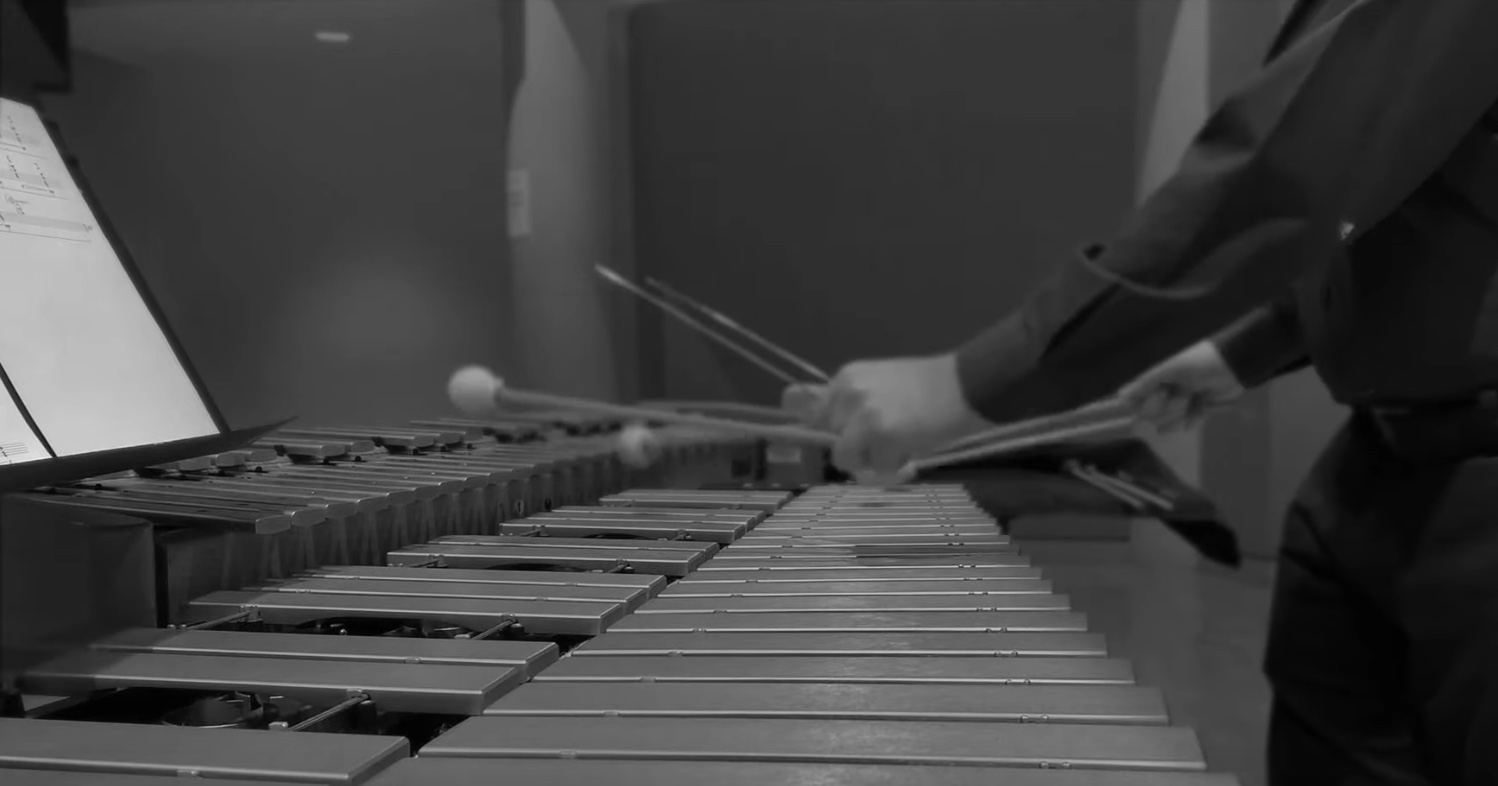
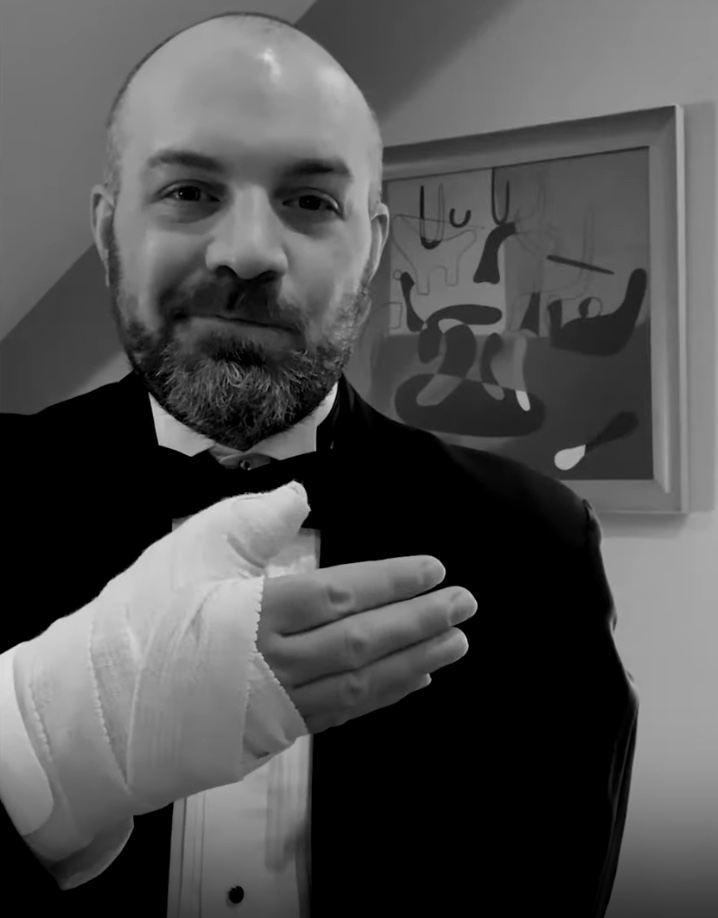
On either side of that bit of bartending, violist James Rhodes brought gravitas to the proceedings with attentive, nuanced performances of Giancinto Scelsi’s 1964 Xnoybis III and a second world premiere, Tyler Adamthwaite’s Fleeting Remnants of the Severed Wonderland.
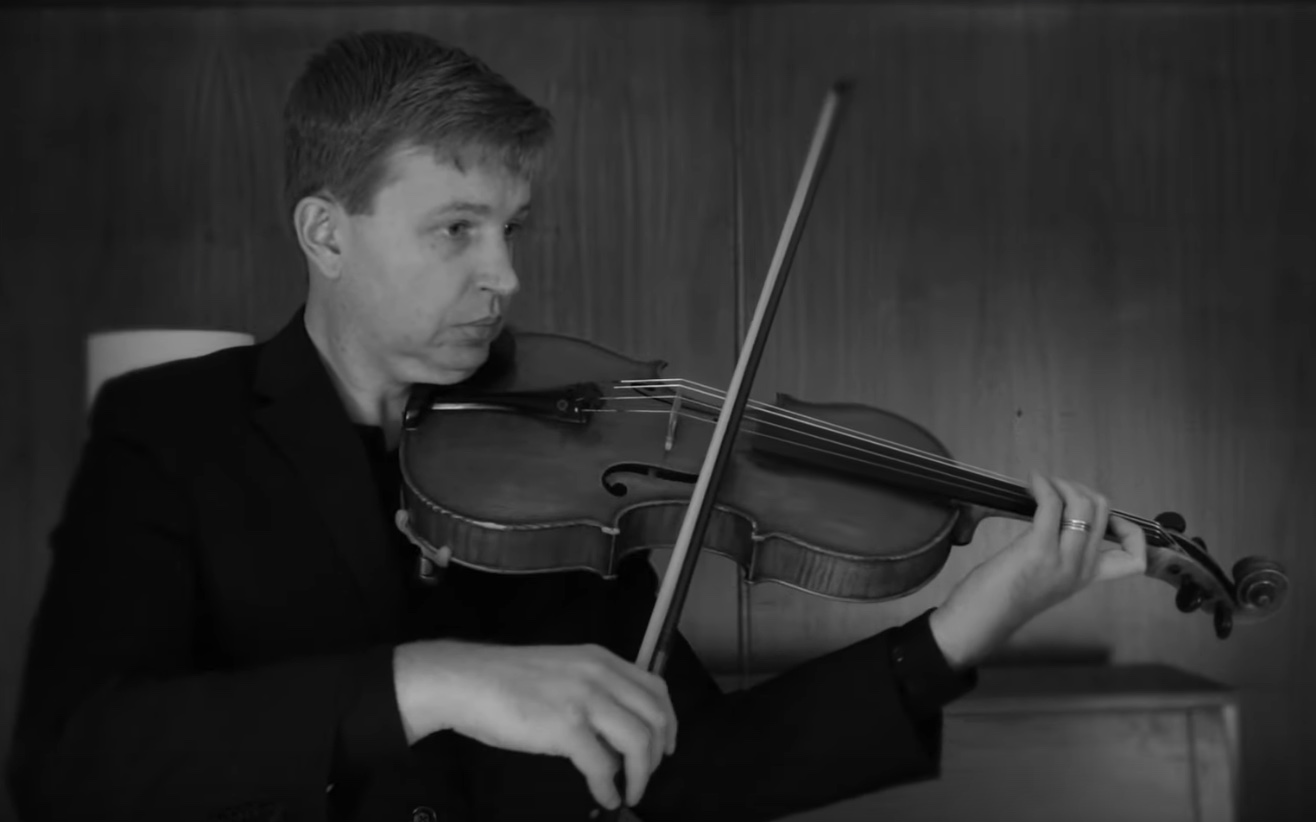
Adamthwaite introduced his piece, saying that “It’s about the contrast between frantic, raspy mumbling and a beautiful, singing quality of sound,” and inviting the listeners to come to their own conclusions about what they mean.
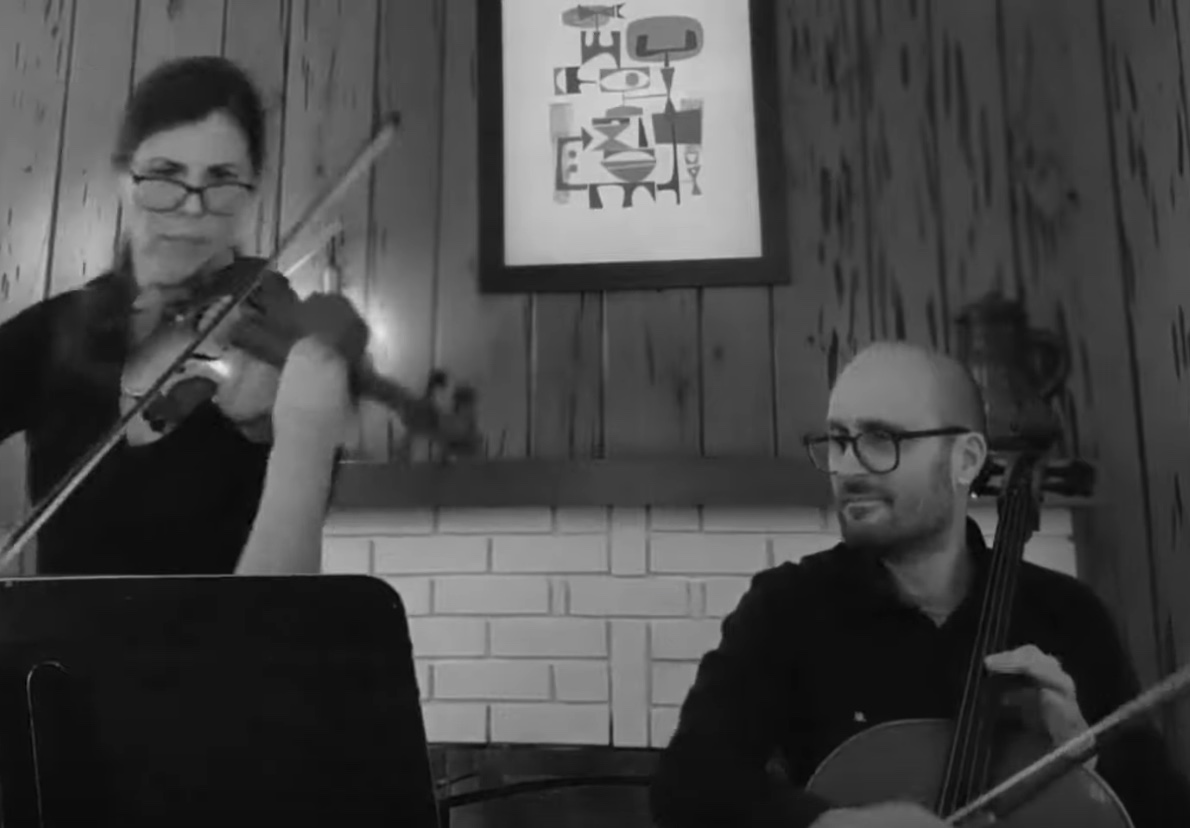
Back in the theoretical realm for the third world premiere, Inga Chinilina wrote in her notes that “Give Me a Second uses the tuning system as an equal participant of the compositional process, along with pitch, rhythm, and timbre.” In her spoken remarks, she said that her piece concerns itself with the interval of a second, but because of different temperaments, “not all seconds are the same.” Cara Tweed turned in a committed performance of a work that much resembles the Scelsi — and shares with it the impression of overstaying its welcome.
Cinematographer Rebecca Rhodes deserves a virtual round of applause for wrapping a number of little scenes together into a cohesive presentation. A separate credit screen identified the composers of other bits of music used for titles and transitions.
The video remains available for on-demand viewing here.
Published on ClevelandClassical.com February 9, 2021
Click here for a printable copy of this article



